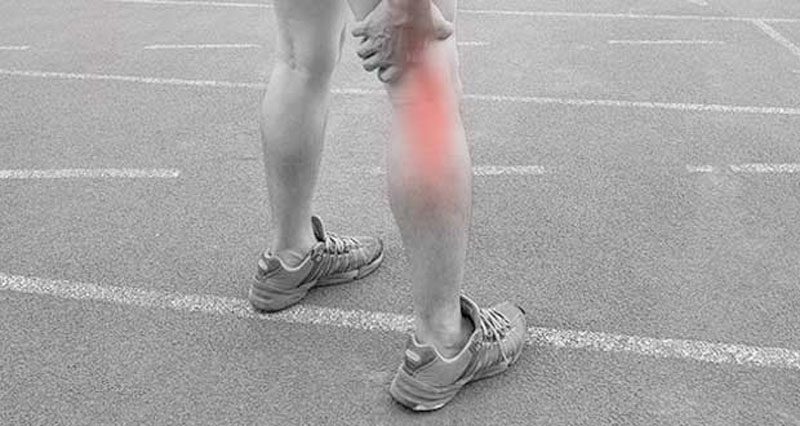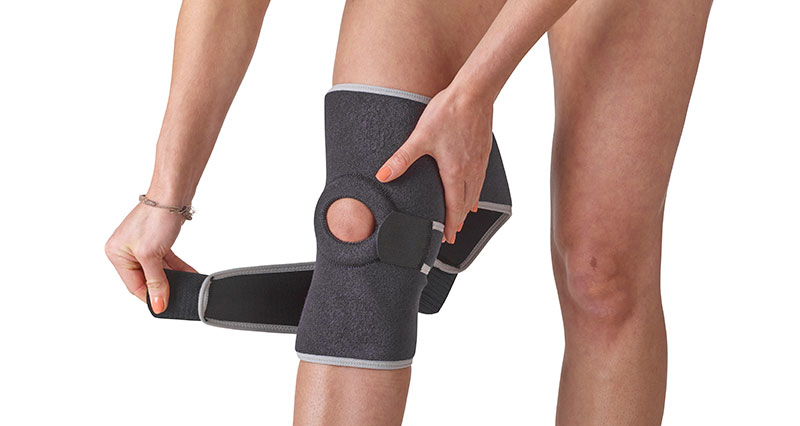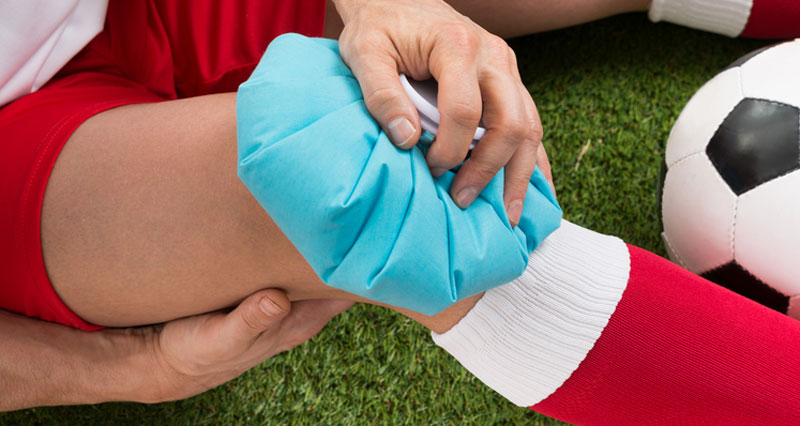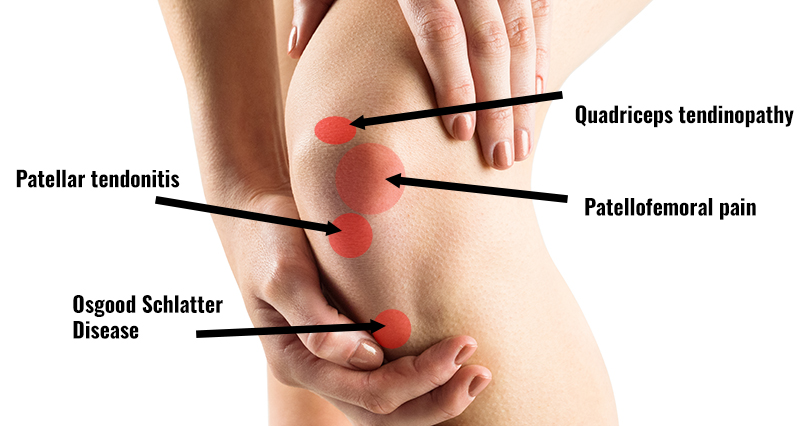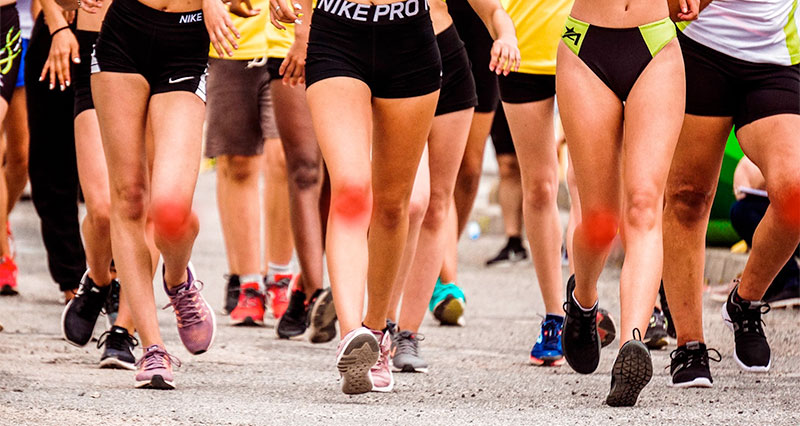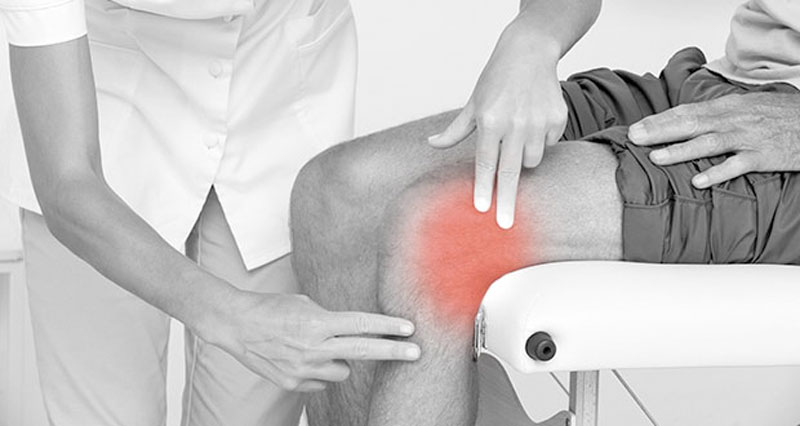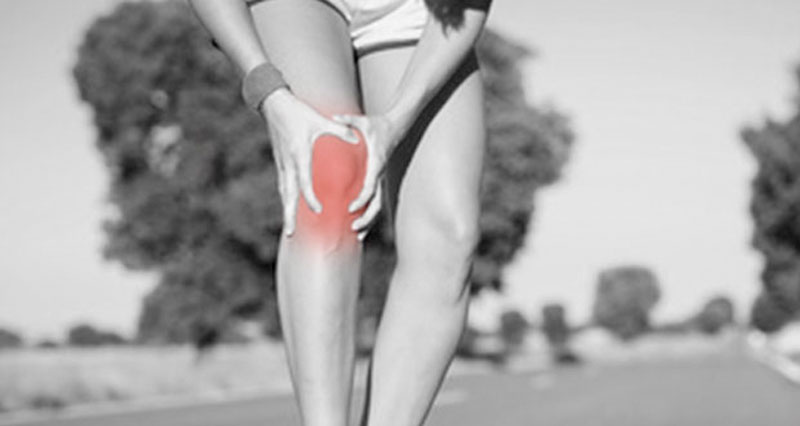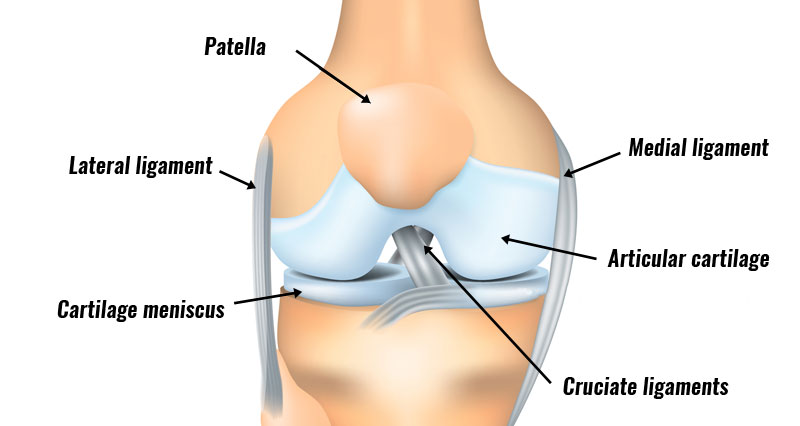Pain at the back of the knee is known as posterior knee pain. Here we explain the common injuries which cause both sudden-onset (acute) and gradual onset (chronic) knee pain.
Medically reviewed by Dr Chaminda Goonetilleke, 30th Nov. 2021
Select the type of posterior knee pain you have:
Acute pain behind the knee
Acute pain usually occurs suddenly and includes ligament sprains, muscle/tendon strains, and bone fractures. As a result, you are often able to pinpoint a specific time your injury occurred.
The following are common acute injuries that cause pain in the back of the knee:
Hamstring tendon strain
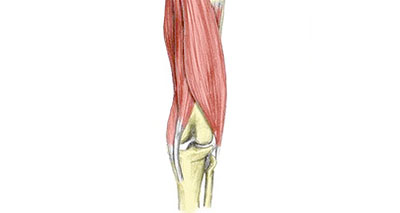
A hamstring tendon strain is a tear of one of the hamstring tendons. The most common is a biceps femoris tendon strain. It is more common in sprinters and kicking sports.
Symptoms include:
- Sudden sharp pain in the back of the knee.
- Swelling, tenderness, and/or heat
An accurate diagnosis is important to rule out a complete tendon rupture, or avulsion strain.
More on biceps femoris tendon rupture
Biceps femoris tendon avulsion
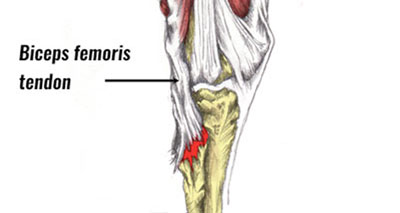
An avulsion strain occurs when a tendon tears, pulling a small piece of bone with it. Symptoms of an avulsion strain:
- Sudden severe pain at the back of your knee
- Sudden swelling
- Tenderness at the back of your knee
More on biceps femoris tendon avulsion
Posterolateral corner injury
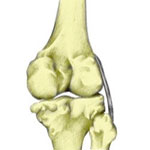
The Posterolateral corner of the knee consists of a number of structures. Symptoms include any of the following:
- Pain and swelling at the back, and outside of your knee
- Tenderness on the outside of your knee
- Knee joint instability
More on Posterolateral corner injury
Posterior Cruciate Ligament Injury (Torn PCL)
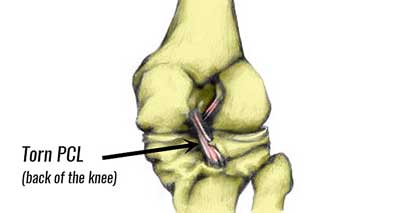
A torn PCL is a rupture (sprain) of the posterior cruciate ligament in the knee joint. Symptoms include any of the following:
- Sudden onset, acute knee pain at the time of injury
- Over time, you may also feel pain radiating into the back of the lower leg
- You may have swelling in the knee joint, although this may be minimal
- Your knee may also feel unstable, as if it is likely to give way, especially when walking downstairs
More on Posterior cruciate ligament
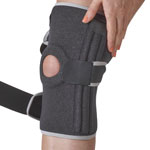
Buy Knee Braces
Chronic pain behind the knee
Pain at the back of the knee which occurs gradually is often overuse related. You are unlikely to be able to pinpoint the exact time your injury occurred. However, an acute injury may become chronic if not treated properly, or it fails to heal. Chronic knee injuries are more difficult to treat, so do not ignore the early signs!
Baker’s Cyst
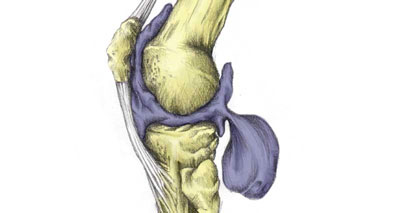
A Baker’s Cyst or Popliteal cyst is a swelling that protrudes out the back of the knee. It is often about the size of a golf ball but can vary over time. Symptoms consist of:
- A sensation of pressure in the back of your knee
- Difficulty bending the knee
More on Baker’s Cyst
Gastrocnemius tendinopathy
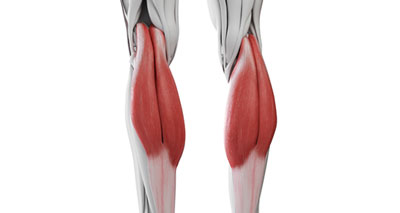
Gastrocnemius tendinitis (or tendinopathy) is inflammation (or more likely degeneration) of the calf muscle tendon at the back of the knee. It is an overuse injury more common in runners and sprinters. Symptoms include:
- Gradual onset pain behind the knee
- Tenderness pressing it at the back of your knee
- Going up on tiptoes may be painful
More on Gastrocnemius tendinopathy
Biceps femoris tendinopathy
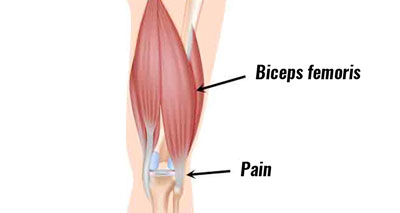
Biceps femoris tendinopathy or biceps femoris tendonitis is inflammation (or more likely degeneration) of the hamstring tendon where it inserts at the back of your knee. Symptoms include:
- Tenderness and swelling at a specific point at the back of your knee.
- Pain is likely to have developed over time.
- You may have stiffness in the morning, or after sitting for long periods.
More on Biceps femoris tendinopathy
Popliteus strain/tendinopathy
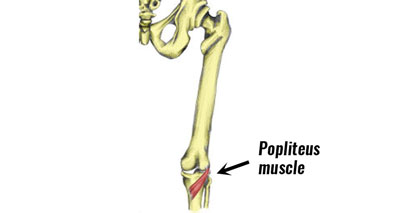
The Popliteus is a small muscle located at the back of the knee. The muscle or tendon can be torn, especially from twisting activities, or injured through overuse. Symptoms may include:
- Acute (sudden onset), or gradual onset pain behind the knee
- The back of your knee will feel tender when pressing in
- Trying to bend your knee against resistance, whilst your tibia (shin) bone is turned outwards is a specific test used to help diagnose a Popliteus injury
More on Popliteus strain/tendinopathy

Buy Knee Braces
Referred pain behind the knee
Posterior knee pain can be caused by injuries or dysfunction in the lower back and hips. Symptoms may include:
- Sciatic pain that radiates down into the back of your leg, knee, and/or lower leg.
- The slump test is to identify sciatic-type referred pain.
Knee joint swelling
Swelling within the knee joint is a symptom rather than a specific injury.
A full knee assessment should be done to identify the root cause of any effusion (swelling). Previous injuries can often be the cause of chronic knee swelling and the development of a Baker’s Cyst.
Knee rehabilitation & exercises
We have the following knee rehabilitation programs available online and through our mobile app:
References & further reading
- Fritschy D, Fasel J, Imbert J-C et al. The popliteal cyst. Knee Surg Sports Traumatol Arthrosc 2006;14:623–8.
